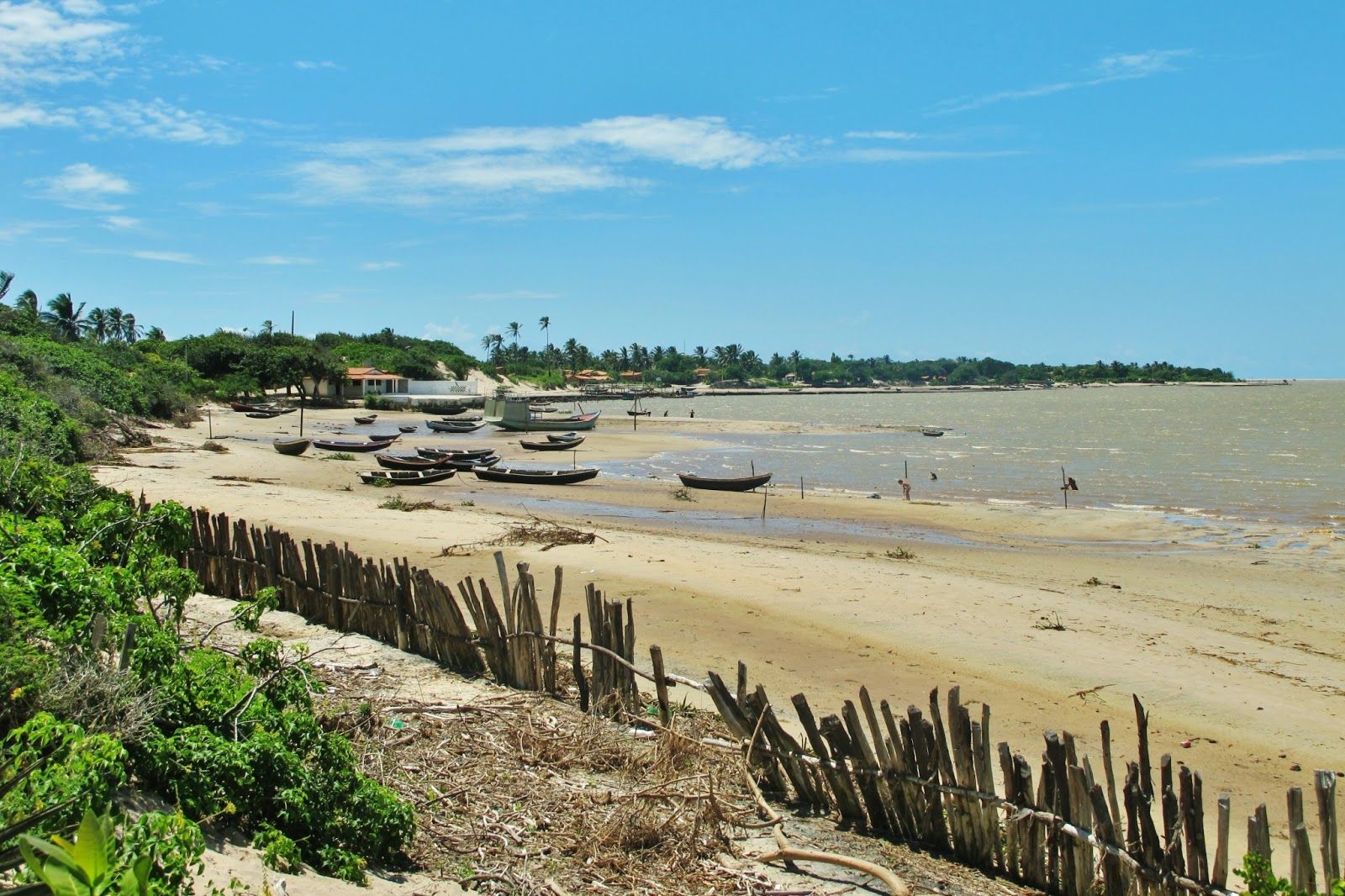Este post também está disponível em:
Português
English
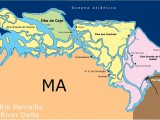
The Canarias Island on the border of Maranhão with the Piauí in the environmental protection area in Maranhão.
Canarias Island in the municipality of Araioses in Maranhão is the second largest island in the Parnaíba River Delta, second only to Ilha Grande in Piauí.
Canarias Island is home to a fishing village with more than 2500 inhabitants.
The history of Canaries has its initial milestone 1806, when a fisherman from Acaraú, together with three companions attracted by the abundant production of fish and with the objective of implanting the corral fishing in the bar of the dives that later came to be called canaries, due to the large number of birds called canaries in the region and a plant that served as food for the animals, called canarana.
Thus the people began to travel to the island of canaries or canarana.
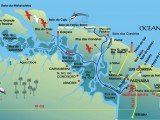
Today the Canarias Island is an environmental preservation area, part of the marine extractive reserve of the Parnaíba River Delta, its population is approximately 2500 inhabitants distributed in four villages: Canaries, Passarinho, Torto and Caiçara.
There are inns and restaurants and is an ideal place for tourists to stroll.
Canarias Island is one of the most beautiful and quietest on the northeastern coast and is part of an archipelago with 80 islands, where tourists are dazzled by the beautiful landscapes and animals of the region: dunes, mangroves, igarapés, crabs, alligators and countless birds that nest by the rivers.
An incredible forest of hanging roots that sprouts into the sea, dunes that advance into infinity, charms of a natural paradise that Europeans discovered in the Northeast.
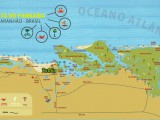
Canarias Island is an environmental protection area, in the extreme east of Maranhão, in the marine extractive reserve of Delta do Parnaíba.
To reach the natural paradise, tourists can go from São Luís via BRs 135 and 222 to Tutóia, on a 470-kilometer journey.
The rest of the way is done by boat along the Costa do Sol, a route that starts in the bay of Tutóia and goes between the islands of the only open sea delta in the Americas.
On an eight-seater boat, on the three-hour tour, it is possible to explore rivers surrounded by mangroves and watch the flocks of seabirds.
The boats anchor on the sandbanks and tourists can enjoy long walks in the open air or bathe in the sea on paradisiacal and primitive beaches, with calm and warm waters.
Watch the video about Canarias Island in the Parnaíba delta
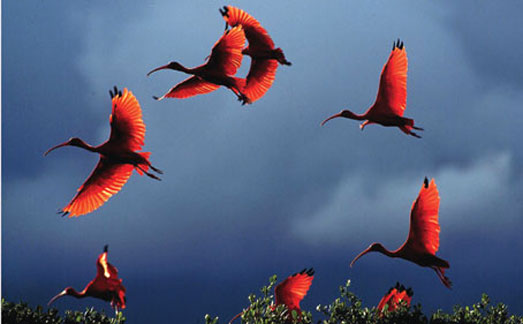
On Canary Island live about 1,500 families, mostly extractivists who bring mouth-watering flavors from the mangrove.
The mangrove fruit moqueca is made with fresh oysters, pompano and prawns. The dish serves two people, with white rice and crabs.
Travel and Tourism Tips in Delta do Parnaíba and Canary Island
Tutóia
Perfect location: between Pequenos Lençóis and the Delta do Parnaíba
Best starting point to get to know the Delta do Parnaíba.
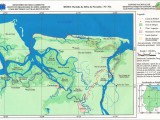
The city has a more than privileged location: next to the Little Lençois and in front of the Parnaíba Delta.
The dunes of the city are a 20-minute walk from the center!
Beautiful beaches, dunes, temporary lagoons of crystal clear water, freshwater spas and numerous boat trips through the holes, streams, bays and islands of the Delta are the attractions, without forgetting the tasty seafood-based cuisine and the Dança do Caroço, unique to Tutóia.
City of Araioses
A small town located right in the middle of the Delta, from where typical boats leave to visit the islands, including Ilha do Caju and Ilha das Canárias.
Pontal das Melancieiras (Tutóia)
Beautiful island/beach formed at low tides with white sand in the middle of the sea.
Ilha do Coroatá (Tutóia)
Small island located in the middle of Tutóia Bay that offers rustic structure of bar and restaurant with varied menu, trail and deserted beach.
Barra do Meio (Caju Bay) and Morro do Meio
This paradisiacal place brings together beaches, mangroves, dunes and a rustic restaurant whose menu is fresh seafood caught right there, such as caranguejadas, peixadas and camaroadas.
Fog of Birds and Guarás
As in the Guarás Forest, Amazônia Maranhense and Alcântara (western coast and Golfão Maranhense), the walks made in the late afternoon to enjoy the flocks of birds and especially the guarás (Eudocimus Ruber) in the mangroves, are mandatory in the Delta; although the populations here are considerably smaller compared to those found on the Amazonian coast of the state. The best flocks of guarás in the Delta are in the vicinity of Tutóia and in Caju Bay.
Marine Horses
On a tour that leaves Tutóia, by regional boat or speedboat, you arrive at the nursery of the docile and exotic seahorses, where you can see them and take pictures in their natural habitat.
Canary Island (Araioses)
The second largest island in the Parnaíba Delta is a sight for sore eyes.
Ilha das Canárias is the second largest island in the Delta, smaller only than Ilha Grande de Santa Isabel, the only large island on the Piauiense side of the Delta, which is more populated, deforested and uncharacterized compared to the islands on the Maranhão side.
The Canary Island is a kaleidoscope of beautiful natural landscapes that passes through beautiful beaches, coconut groves, picturesque villages (there are 5 in total), dunes, sandbanks, forests, mangroves, rivers and streams. The island has the best structure for lodging and tours in the entire region, albeit timidly: they are rustic but comfortable inns, where the visitor can feel fully integrated into the beautiful surrounding landscape and make ecological tours by sea and land.
Ilha (and Igarapé) do Guirindó
Abundant wildlife of the Delta
Situated on the left bank of the Parnaíba River, south of Ilha das Canárias, this Maranhão island is throbbing with wildlife in its narrow igarapés fed by the fresh waters of the Parnaíba River: guariba and prego monkeys, birds and iguanas can be seen with ease by day and by night, spotting caimans and other nocturnal animals is also a must-see program.
Brave Bean Beach
Beach of unparalleled beauty between the sea and the river, with dunes and mangroves; located north of Canary Island, on Ilha dos Poldros.
Orla de Tutóia
The coastline of Tutóia is made up of many dunes, coconut groves, fishing villages and beautiful semi-deserted beaches, with the highlight being Praia do Amor and Arpoador.
The proximity to the Little Lençois, which are filled with greenish or bluish lagoons of crystalline waters in the rainy season, gives the beaches an exotic and passionate beauty.
Ilha do Guajiru and Poldros
Two small islands located to the north of the large Canary Island. Both have exceptional natural beauty with dunes, between mangroves and the Atlantic Ocean, and both have sophisticated inns with very limited capacity.
Ilha Grande do Paulino
Fourth largest island in the Delta, the island is still in the process of being structured to receive visitors.
Paulino Neves
See in the tourist region “Lençóis Maranhenses”.
Ilha do Caju (Araioses)
Diverse landscape is home to the largest biodiversity in the Delta
(Currently, the ecological pousada of Ilha do Caju is closed for renovations and is not expected to reopen)
Arguably the most beautiful island in the Parnaíba Delta.
Caju Island is the most preserved and the third largest in the region, as well as being the largest private island in Brazil.
It houses an ecological lodge that organizes hiking, horseback riding, kayaking and traction vehicle tours to discover the diverse landscapes and preserved ecosystems such as deserted beaches, sandbanks, dunes, lagoons, forests, mangroves, flooded fields and cashew trees that are home to various species of birds, mammals, reptiles and amphibians.
Tourism and travel guide to Canarias Island and the Parnaíba Delta
